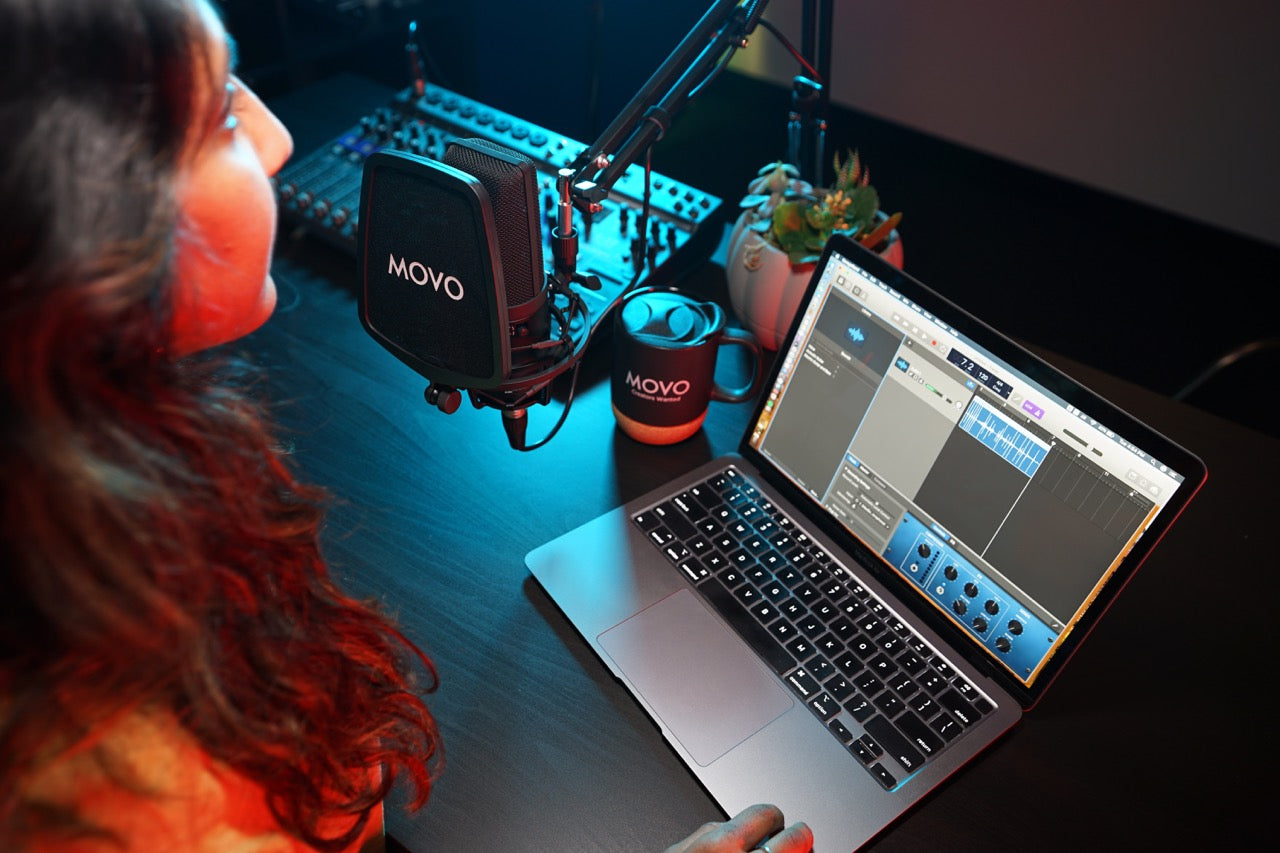Your Cart is Empty
 Free Shipping
Free ShippingEnjoy the convenience of free shipping on all orders. We believe in transparent pricing and delivering value straight to your doorstep. read more...
 30-Day Money-Back Guarantee
30-Day Money-Back GuaranteeShop with confidence knowing you have a full 30 days to try our products. If you're not completely satisfied, return your purchase for a full refund, no questions asked. read more...
 2-Year Warranty
2-Year WarrantyWe stand by the quality of our products with an industry-leading 2-year warranty. Enjoy peace of mind knowing your vlogging and podcasting equipment is covered against defects and issues. read more...
 Lifetime Customer Support
Lifetime Customer SupportOur commitment to you doesn't end at purchase. With lifetime customer support, you can reach out to our expert team anytime for help, advice, or troubleshooting, ensuring you always get the best performance from your gear. read more...

Discover the key differences between condenser and dynamic microphones, their advantages and trade-offs, and how to choose the perfect mic for your recording needs.
by Alex Sporano May 09, 2023
In the world of audio recording, choosing the right microphone can make or break your final output. With so many options available, it's essential to understand the differences between the two primary microphone types: condenser and dynamic. This article aims to help audio recording enthusiasts and beginners make an informed decision when selecting a microphone.
We'll discuss how each mic works, their advantages and trade-offs, and provide recommendations based on various use cases. So, let's dive in and find the perfect mic for you!
A condenser microphone, also known as a capacitor microphone, uses a capacitor to convert sound into electrical signals. This type of mic has two plates: one fixed and one movable. When sound waves hit the movable plate, it vibrates, causing the distance between the two plates to change. This change in distance generates an electrical signal, which is then amplified and converted into an audio signal.
Want to learn more? Read our full guide about how condenser mics work.
Dynamic microphones work through electromagnetic induction. A diaphragm, usually made of plastic or metal, is attached to a coil that surrounds a magnet. When sound waves hit the diaphragm, the coil moves within the magnetic field, generating an electrical signal that corresponds to the sound.
When comparing condenser and dynamic mics, it's essential to consider factors such as sensitivity, frequency response, and polar patterns.
The table below provides a quick comparison of the two types:
| Feature | Condenser Microphones | Dynamic Microphones |
| Sensitivity | High | Low |
| Frequency | Wide | Narrower |
| Transient | Excellent | Slower |
| Durability | Delicate | Durable |
| Power Requirement | Phantom Power | None |
Examples of situations where one mic might be more suitable than the other:
Considerations when choosing between a condenser or dynamic mic:
When selecting a microphone, consider factors such as your budget, recording environment, and intended use. Based on these factors, we've provided recommendations for specific condenser and dynamic microphone models.
The Movo VSM-7 is basically 3 microphones in 1, offering Cardioid, bi-directional, and omnidirectional microphone polar patterns to get studio-quality sound in a wide range of use cases.
The Movo HV-M5 is perfect for capturing broadcast-quality audio in any setting. It’s a versatile handheld cardioid dynamic microphone that can cover a wide range of tasks, including singing, karaoke, live and studio musical performances, and voice recording.
Understanding the differences between condenser and dynamic microphones is crucial for choosing the right mic for your needs. Condenser mics offer high sensitivity and a wide frequency response, making them suitable for studio recording, vocals, and acoustic instruments. On the other hand, dynamic mics are more durable and better suited for live performances, drums, and electric guitars.
Ultimately, the choice between a condenser or dynamic mic will depend on your specific recording needs, environment, and budget. Happy recording!
We’re a team of creators and entrepreneurs who proudly support the content creation community through innovative, high-quality products that let you do you. From filmmakers to photographers, vloggers to podcasters, and beyond, Movo helps you share your creative voices across countless mediums and content platforms everywhere.
Receive access to exclusive deals, updates, and more.



